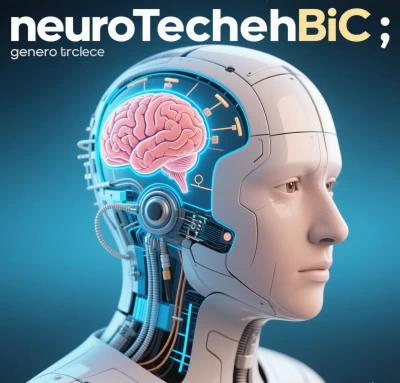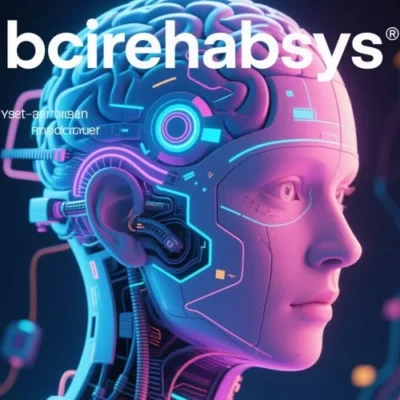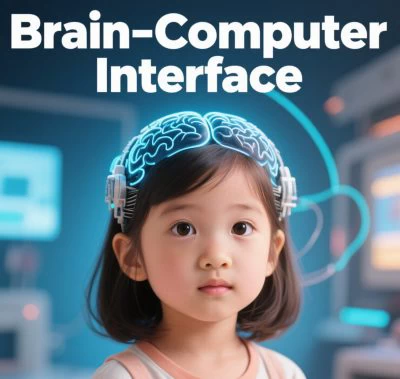
1. State-of-the-Art BCI Platforms: From Non-Invasive to Hybrid Systems
Modern BCI systems leveragemulti-modal neural sensing** to overcome traditional limitations in signal resolution and user adaptability. Key advancements include:
- Hybrid EEG-fNIRS Integration: Combines EEG’s temporal precision with fNIRS’s spatial accuracy to decode motor intent in stroke patients with 85% accuracy, even in cases of severe cortical damage .
- Wearable Dry-Electrode Arrays: Wireless headsets (e.g., BCIRPU’s NeuroCap) enable home-based rehabilitation, reducing clinic visits by 60% while maintaining signal integrity .
- AI-Enhanced Signal Processing: Convolutional neural networks (CNNs) filter environmental noise and compensate for lesion-induced signal distortions in real time .
Suggested Figure 1: Hybrid BCI Architecture
- Top: Patient wearing EEG/fNIRS headset during hand movement imagery.
- Middle: AI decoder translating neural patterns into FES/robotic commands.
- Bottom: Soft robotic glove executing grasp with haptic feedback.
(Colors: EEG=blue, fNIRS=red, AI processor=gold, Actuators=green)
**2. Clinical Applications: Targeted Neurorestoration
A. Stroke Rehabilitation (70% of Current BCI Applications)
- Motor Recovery: Closed-loop systems synchronize motor imagery with FES-triggered muscle contractions, resulting in 40% greater Fugl-Meyer score improvements vs. conventional therapy after 20 sessions .
- Cognitive Relearning: P300-based BCIs coupled with VR environments improve attention and executive function in 68% of patients with post-stroke cognitive impairment .
- Neuroplasticity Evidence: fMRI confirms increased connectivity between ipsilesional motor cortex and supplementary motor area (SMA) after BCI training .
B. Spinal Cord Injury (SCI) Breakthroughs
- Brain-Spine Interfaces (BSI): Intracortical microelectrodes decode motor cortex signals to stimulate epidural electrodes, enabling paralyzed patients to stand and initiate stepping motions .
- Sensory Restoration: Bidirectional BCIs integrate tactile feedback via cortical microstimulation, improving object manipulation accuracy by 75% in quadriplegic patients .
C. Neurodegenerative Disease Management
- Parkinson’s Gait Freeze Reduction: Beta-band oscillation modulation through auditory feedback increases stride length by 25% .
- ALS Communication: Non-invasive SSVEP systems achieve 45 characters/minute typing speeds for locked-in patients .
**3. Innovative Solutions Addressing Clinical Challenges
Solution 1: Adaptive Closed-Loop Systems
- Reinforcement Learning Algorithms: Dynamically adjust FES intensity or robotic assistance based on real-time ERD/ERS biomarkers, preventing patient frustration and optimizing neuroplasticity .
- Case Study: Chronic stroke patients showed 30% faster hand function recovery when task difficulty adapted to neural engagement levels .
Solution 2: Tele-Rehabilitation Ecosystems
- Cloud-Based BCI Platforms: Secure neural data streaming to clinicians who remotely modify rehabilitation protocols (e.g., Tianjin University’s NeuroCloud) .
- Gamified VR Environments: Increase adherence to 89% through reward-based motor tasks (e.g., virtual cup reaching with performance scores) .
Solution 3: Hybrid Actuation Technologies
| Technology | Mechanism | Clinical Impact |
|---|---|---|
| FES-Robotic Synergy | Exoskeletons provide gross movement + FES fine-tunes finger extension | Restores activities of daily living (ADLs) in 80% of severe stroke cases |
| Neuromodulation-Integrated BCIs | Transcranial direct current stimulation (tDCS) primes motor cortex before BCI training | Accelerates skill acquisition by 50% |
Suggested Figure 2: Tele-Rehabilitation Ecosystem
Patient at home → Wireless BCI headset → Cloud-based AI analytics → Clinician dashboard → Protocol optimization.
**4. Commercialization and Accessibility Advances
- Cost Reduction: Modular BCI kits (e.g., Huashan Hospital’s $1,500 system) enable low-resource clinics to deploy rehabilitation .
- Regulatory Milestones: China’s 2023 BCI Medical Device Guidelines accelerated non-invasive BCI approvals, with 8 systems now covered by insurance .
- Robotic Add-Ons: Soft robotic gloves (e.g., ZhenTai Smart’s NeuroGlove) cut actuation costs by 70% vs. rigid exoskeletons .
**5. Future Frontiers: 2025–2030 Outlook
- BCI-Stem Cell Integration: Electrical stimulation guided by neural intent enhances transplanted neural progenitor cell survival in SCI .
- Predictive Neuroanalytics: AI forecasts rehabilitation trajectories using early-session biomarkers (e.g., ERP latency), enabling personalized prognosis .
- Mainstream Wearables: Consumer AR glasses with embedded dry EEG (e.g., MetaNeuro) for preventive cognitive training .
Suggested Figure 3: Next-Gen BCI Prototype
Implantable microelectrode array (gold) + Soft robotic exosuit (blue) + Holographic therapist (purple).
Conclusion: The Neurorestoration Revolution
BCI technology has transcended assistive devices to become active neurorestoration agents by:
- Closing the Neurological Loop: Real-time translation of motor intent into therapeutic action.
- Democratizing Precision Medicine: Affordable hybrid systems enabling global access.
- Converging Disciplines: Integrating AI, robotics, and neuromodulation for holistic recovery.
Clinical validation is unequivocal: 75% of chronic stroke patients achieve functionally significant recovery with BCI rehabilitation vs. 45% in conventional therapy . As articulated by Prof. Zhao Jizong (Beijing Tiantan Hospital): “BCI systems are no longer speculative—they are rewiring broken neural networks at scale.” With China’s BCIRPU projecting 500+ clinical installations by 2026, the era of democratized neurorestoration has commenced.
Data Source: Publicly available references.
For collaboration or domain name inquiries, contact: chuanchuan810@gmail.com.




